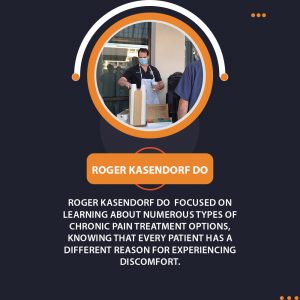Osteopathic Manipulation


Osteopathic manipulation is a form of bodywork that stresses the physical manipulation of body tissues. It is administered by trained practitioners known as osteopaths. Practitioners use manual manipulation techniques to help patients alleviate pain, and their approach is patient-centered. The main focus of this treatment is restoring the patient’s health and well-being.
Treatment options
Osteopathic manipulation is a method of physical therapy used for musculoskeletal disorders. It can be used to treat injuries, reduced flexibility, and inflammation in the body. Osteopathic physicians use more than 40 different techniques to manipulate the body. They can diagnose a condition and offer treatment options based on the findings.
Osteopathic manipulation involves using hands to treat the musculoskeletal system. Osteopathic physicians have specialized training in healing the musculoskeletal system and are licensed to treat many different medical conditions. Osteopathic manipulation can be used to treat a variety of health problems and help the body regain its natural function.
Osteopathic manipulation is a safe and effective treatment method for most patients. It helps restore muscle and tissue balance, relieve pain, and improve circulation. It also improves overall movement and reduces tension and muscle spasms. Although osteopathy is most commonly used for lower back pain, it can be beneficial for many conditions. It can also help with digestive and breathing issues, sports injuries, and other problems. However, people with recent fractures, cancer, or recent surgery should consult with an osteopathic physician before undergoing this treatment.
Techniques
Osteopathic manipulation involves the manual manipulation of joints and tissues. The aim is to restore the balance and motion of joints and tissues through manipulation. Techniques vary according to the pathophysiology of the disease. The patient’s condition is an important factor in determining the type of manipulation. Osteopathic doctors use two basic models in their treatments. One is the respiratory/circulatory model.
Osteopathic doctors treat a wide range of ailments and use manual therapy and manipulation to relieve pain and discomfort. They treat diseases such as joint pain, headaches, postoperative ileus, gastric reflux, and even asthma. The techniques used in this medical discipline have generated much interest among physicians. At O’Horan Hospital, it has led to good results for patients.
Side effects
Osteopathic manipulation is a common treatment for musculoskeletal pain. Its hands-on manipulation approach targets the joints, tendons, ligaments, and fascia of the body. It may help with chronic pain and discomfort, including those related to poor posture and overuse of muscles. In addition, targeted manipulation can improve sleep.
Although some people experience a sore or achy feeling after an osteopathic manipulation, these symptoms usually subside after a day or two. A slight headache is not uncommon. However, you should consult with a doctor before undergoing an osteopathy manipulation session to avoid aggravating symptoms. Also, you should stay away from strenuous physical activities for a few days after your treatment to ensure proper alignment.
Osteopathic manipulation can also help people suffering from seizure disorders. In fact, some research suggests that osteopathic manipulative treatment for seizure disorder may help prevent seizures in children.
Patient-centered approach
Patient-centered approaches to osteopathic manipulation (OM) provide a customized approach for the patient. Because different patients experience similar symptoms, treatment approaches should be tailored to their specific symptoms. Fortunately, this type of treatment is an effective way to treat a variety of conditions.
Patient-centered approaches to osteopathic manipulation focus on integrating the patient’s view of their pain and body function into the treatment. Osteopathic doctors may use osteopathic manipulative techniques to treat a wide variety of conditions, from chronic headaches to a variety of musculoskeletal complaints. The goal of this approach is to improve patient outcomes, reduce costs, and ensure patient safety.
The osteopathic profession has been increasingly moving towards patient-centered approaches to health care. Osteopathic physicians are highly skilled in using a patient-centered approach in treatment programs. Osteopathic physicians integrate their patients’ life histories and current health goals into the treatment plan.
Evidence-based approach
An evidence-based approach to osteopathic manipulation is needed in order to maximize the benefit of osteopathic manipulation. The use of systematic reviews and other types of clinical research is challenging for osteopathic physicians, yet it represents the highest level of evidence available. This is especially important for the cranial bones, which must change their meaning as they develop during adolescence.
Evidence-based research aims to establish the benefits and risks of osteopathic manipulation. The application of the techniques is critical to their success. Not all osteopathic physicians are equally skilled in performing every technique, and some are not even trained as OMM specialists. Because of this, it is important for physicians to choose techniques they are most comfortable performing. Additionally, physicians should balance potential risks and patient factors when selecting a particular technique. In general, gentle techniques are preferred over forceful ones.
